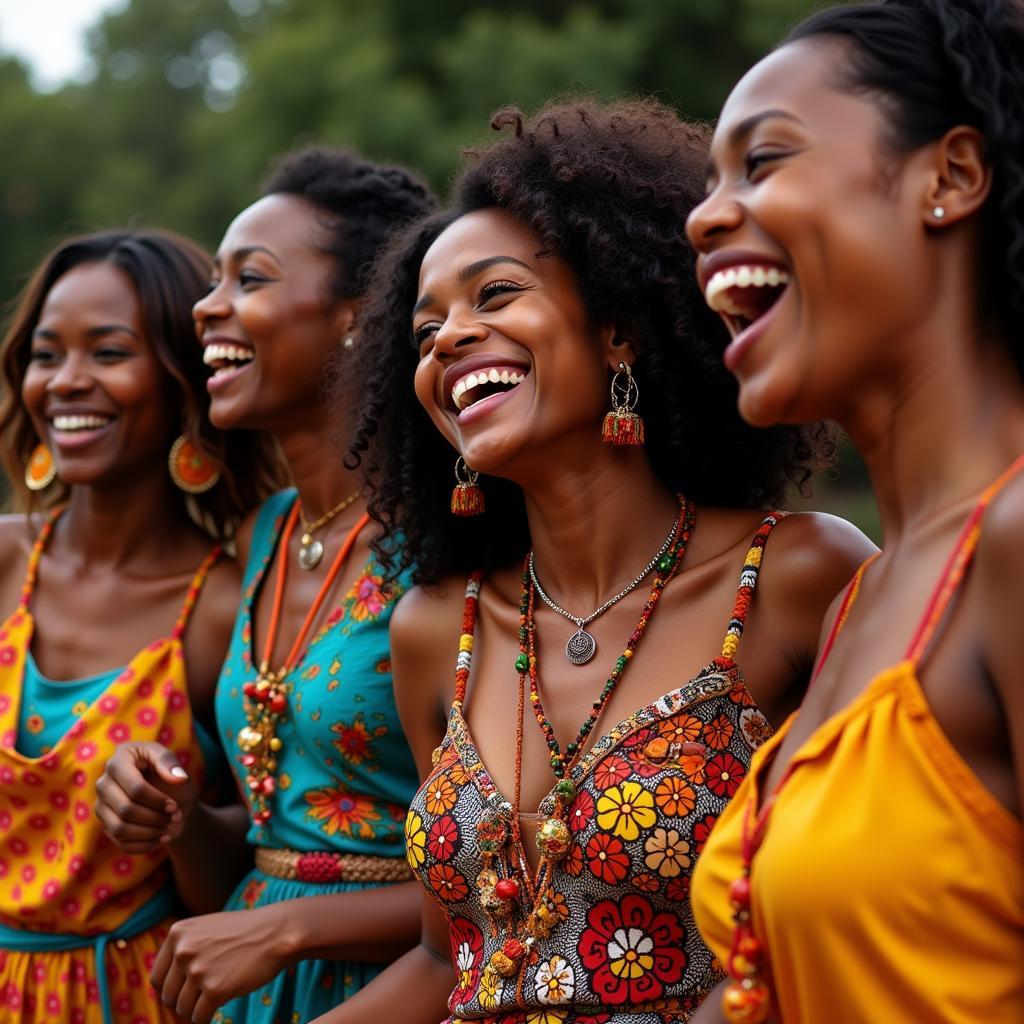Understanding African American Hand Gestures
African American Hand Gestures, like any form of nonverbal communication, can add layers of meaning and nuance to conversations. These gestures are often deeply rooted in cultural history and social context, offering a fascinating glimpse into the rich tapestry of African American expression. Understanding these nuances is crucial for effective communication and cross-cultural understanding.
It’s important to remember that African American hand gestures, like all cultural expressions, are diverse and vary by region, age, and individual. There is no single dictionary of gestures, and meaning can be fluid depending on the context. However, exploring some common examples can offer valuable insights. One example relates to greetings, where handshakes can be more elaborate, incorporating snaps, slides, and other stylized movements. This can be a way of showing camaraderie and connection. You can read more on greeting cards specifically designed for African American romantic occasions in African American romantic greeting cards.
The History and Significance of African American Hand Gestures
African American hand gestures are often passed down through generations, carrying with them historical and cultural significance. Some gestures may have origins in West African traditions, while others developed within the African American community in the United States. These nonverbal cues can communicate a range of emotions, from joy and excitement to frustration and disapproval.
The Role of Context in Interpreting Hand Gestures
Interpreting African American hand gestures requires understanding the context in which they are used. A gesture that might signify one thing in a casual conversation among friends could have a different meaning in a formal setting. Paying attention to facial expressions, tone of voice, and body language can help provide a more complete picture. For instance, the dap, a complex handshake, conveys a sense of solidarity and shared identity.
Common African American Hand Gestures and Their Meanings
While generalizing can be misleading, some hand gestures are more widely recognized within the African American community. The “church snap,” a quick, sharp snap of the fingers often accompanied by a head nod, is a common way to express agreement or appreciation, particularly in church settings. Another common gesture involves pointing with the lips, a subtle yet effective way to indicate direction or draw attention to something. You might also see examples of elaborate handshakes, often incorporating snaps, slides, and other stylized movements, as a way of showing camaraderie and connection. For a broader understanding of hand representation in African American art and culture, explore resources like African American female hand.
Beyond the Basics: Subtleties and Nuances
Many African American hand gestures carry subtle nuances that can be easily missed by those unfamiliar with the culture. A slight change in hand position, the speed of a movement, or the accompanying facial expression can drastically alter the meaning of a gesture. For instance, a seemingly simple hand wave can convey a variety of messages, from a casual greeting to a dismissive gesture, depending on the context and execution.
Avoiding Misinterpretations and Promoting Cultural Sensitivity
Misinterpreting hand gestures can lead to misunderstandings and cultural insensitivity. It is essential to approach interactions with a willingness to learn and a sensitivity to cultural differences. Avoid making assumptions about the meaning of a gesture. If you are unsure, it is always best to ask for clarification rather than risk causing offense. For a deeper dive into African culture, explore diverse topics such as African Christmas Joy to the World lyrics or even African dance xxx, to understand the diverse range of cultural expressions within the African continent. Learning about African American hand gestures is a journey, not a destination.
Respecting Cultural Differences in Nonverbal Communication
Respecting cultural differences is paramount in effective communication. Understanding that different cultures have different norms around nonverbal communication is a crucial step towards building bridges and fostering mutual understanding. Engage with curiosity and an open mind, and be willing to learn from those around you. By acknowledging and appreciating these differences, we can enrich our interactions and cultivate more meaningful connections. Explore different cultural aspects such as African American butter cookies to appreciate the diverse traditions.
In conclusion, African American hand gestures are a vibrant and dynamic part of a rich cultural heritage. Understanding these gestures offers valuable insights into African American communication and promotes cross-cultural understanding. By approaching these nuances with respect and a willingness to learn, we can build stronger relationships and appreciate the beauty of diverse forms of expression. Remember, exploring African American hand gestures requires continuous learning and sensitivity to context.
FAQ
- What are some common African American hand gestures?
- How do hand gestures differ within the African American community?
- What is the significance of context in interpreting hand gestures?
- How can I avoid misinterpreting African American hand gestures?
- Why is it important to respect cultural differences in nonverbal communication?
- What resources can I use to learn more about African American hand gestures?
- How do hand gestures contribute to the overall communication style of African Americans?
Need support? Contact us 24/7: Phone: +255768904061, Email: [email protected] or visit us at Mbarali DC Mawindi, Kangaga, Tanzania.


